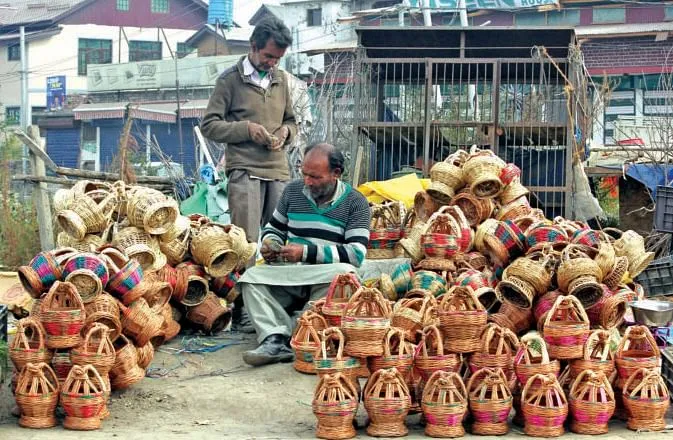Kanger is our traditional firepot that we use during winters. It is the cheapest and potable item Kashmiris keep to warm themselves. Among all the winter preparations, it is a priority.
It is used during cold or when it rains or snows. No sooner the chilly conditions intensify than people in the Valley start buying it, no matter what the price is. They find it most convenient to save themselves against the biting cold. No doubt, there are numerous Bukharies, and other heating gadgets used nowadays, yet, this traditional artifact hasn’t lost its worth. From a layman to a reputed fellow, everybody likes it, in one way or the other. However, the charm is more when it is taken under traditional-pheran.
The name Kanger is derived from a Sanskrit word, ‘Kasthangarika’ (Kash means wood/wicker and Angarika means fire embers). Not much is known about how it came to Kashmir. Although, the historians have suggested that the Kashmiris learnt the use of Kanger from Italians during the Mughal rule who usually visited the valley during summer months, yet, there is ample historical evidence to suggest that it didn’t come to Kashmir from Italy but has been here since early times.
There are several thousands people in Kashmir that earn their livelihood through this skill-required craft. It demands patience and hard-work. And from, almost, all parts of Kashmir, firepots start pouring into the markets as soon as the mercury level dips. Yet, the most famous producers of it are Charar-i-Sharief (Budgam), Bandipora, Anantnag and Tujjar Sharief (Sopore). Charar Kanger is famous not only in Kashmir but also all outside because it is manufactured differently with northern Kashmir’s Bandipora at no. 2. Scores of families in these districts, earn their income by making different types of Kangris that get sold like hotcakes.
Kanger that we purchase in Rs. 500 or 600 is not woven in just one hour or so, but it undergoes a long process before being used. Kangri wears (kanyel) from the commencement of autumn, remain busy in making Kangris. Though these weavers differ in their skill, yet, the raw material that this craft requires is everywhere the same. Kundal (firepot) and Kanye (sticks like posh kanye, geer kanye & khech kanye) are some of the most frequently used constituents that Kangris are often made up of.
These weavers bring sticks from forests, later peeled off by women. In some families women also help in making Kangris but men are mostly seen doing this work.
In the earlier days, Kangri vendors used to go from village-to-village to sell their stock but now this dealing is restricted. Except money, people in rural areas bought Kangris by giving goods like cereals, etc. to sellers. But now, the trend isn’t in vogue.
Kanger, purchased every year, comes in varieties because of cultural advancement of people. Kangri weavers change its structure annually. They decorate it to attract more customers. As an important item of Eid Bogh and Wand Bogh (a gift culture that Kashmiris associate to the bride’s trousseau), it is also kept in art-showrooms.
Though it varies in cost, yet Kangris like mareen kanger, khoja kanger and izband kanger etc., are costly. Apart from Kashmir, it has spread its wings to other places also, where it is used in cold and admired as local artisanal craft.
Wahab Kak, the Kangri weaver’s popularity hasn’t yet faded in my village. My mother used to buy a small firepot for me from him. My memories of how every year she would by a small Kangi for me haven’t dwindled. I recall, she would, ahead of winter, insist the weaver to bring it. It indeed used to be fun those days to roast an egg in Kanger which on getting barbecued would burst out spreading the ash all around it. In fact, last year while traveling from Srinagar to Jammu, a fellow passenger happened to buy Kanger from Maraz (south Kashmir) market. He was taking it to Ludhiana, where it helped to combat chill, and reminded him of his own culture.
Manzoor Akash is regular GK contributor







